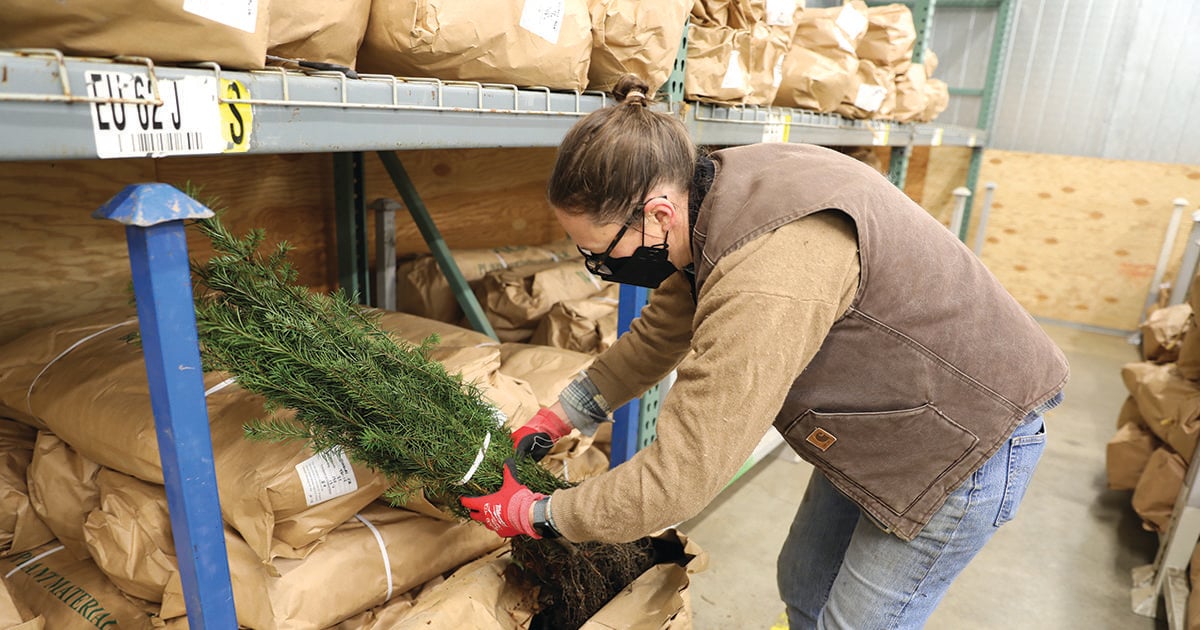Metro plants 300,000 plants in six weeks | Metro - Metro newsfeed

Every winter, a warehouse in northwest Portland fills with hundreds of thousands of plants and hundreds of pounds, sometimes a couple tons, of seeds. Rather than a sea of pots and greenery, it's shelf after shelf stacked with hundreds of brown paper bags.
Each bag is a bundle of serviceberry or red osier dogwood or tall Oregon grape or another of dozens of native plants. There's no soil in the bags; each plant looks like it's just been pulled out of the ground. Which it has, and these bare-root plants needs to be planted quick.
This year, plants went to 18 Metro nature parks and natural areas. Planting crews unbundled the plants, stashed them in shoulder bags and then planted them in forests, along streams and across prairies. They even waded through winter-cold wetlands to place the plants.
In six weeks, they planted 300,000 plants.
Beef Bend Natural Area
Just west of Tualatin and north of Sherwood
Beef Bend Natural Area lies across the river from the Tualatin River National Wildlife Refuge. Nearly 109,000 bulbs went into the natural area, including more than 60,000 ookow bulbs. There was also camas, wild onions, star tulips, white rock larkspur, chocolate lily: prairie plants that support pollinators and draw in birds. To top it off, crews spread out 2,000 pounds of fescue and slender hairgrass seed.
Dairy-McKay Confluence Natural Area
Between Hillsboro and Cornelius
Dairy-McKay Confluence Natural Area received the most bare-root plants this year, with 35,700 going to upland and wetland planting areas. Nearly 55,000 live stakes were stuck into Dairy Creek's banks. The live stakes are 2- to 3-foot cuttings of willow branches with a pointy end. Four types of willow made up the live stakes. They'll root and then grow to shade the creek, creating stronger habitat for native fish.
Clear Creek North Natural Area
South of Happy Valley and east of Oregon City
Metro manages a 700-acre complex of natural areas along Clear Creek, one of the Clackamas River's tributaries. Clear Creek North spans 107 acres of canyon filled with big trees and shrubs typical of the area's upland forest. Nearly 22,000 bare-root plants went to the natural area this year. They ranged from future mighty big-leaf maples and western hemlocks to fruitful understory plants like thimbleberry and red flowering currant. To see a similar habitat, visit Metro's new park in Oregon City, Newell Creek Canyon Nature Park.
Pecan Creek Natural Area
South of Lake Oswego
Pecan Creek Natural Area is typical of many of Metro's small natural areas. Just 25 acres, it runs much of the length of its namesake creek, one of the Tualatin River's tributaries. Like Clear Creek North, the natural area's upland forest was planted with woody, berry-rich shrubs like salmonberry, red elderberry and cascara. It also has 100 new western hemlocks.
Comments
Post a Comment